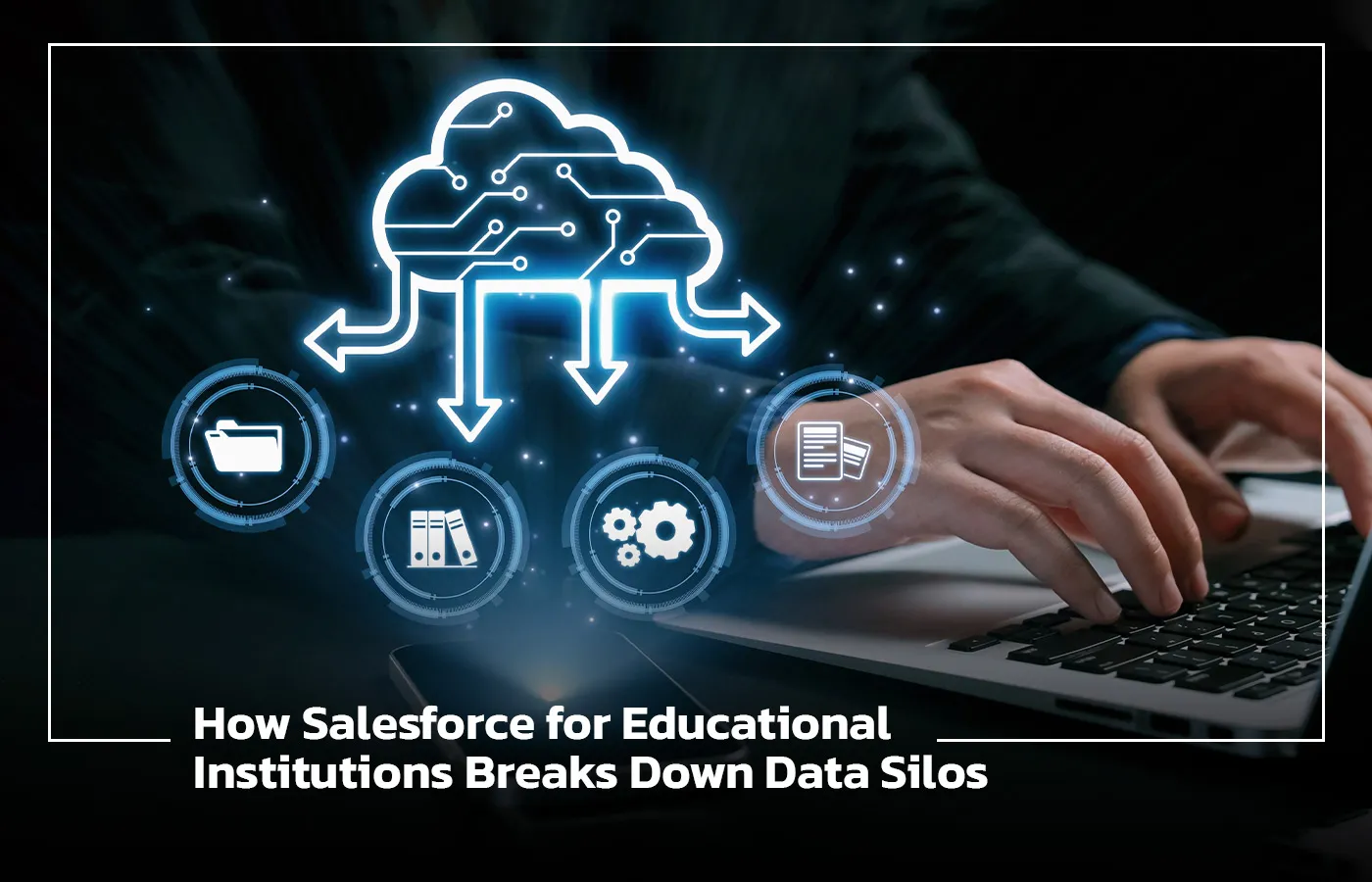How Salesforce for Educational Institutions Breaks Down Data Silos

Why Disconnected Systems Are Failing Educational Institutions
For universities and colleges today, digital transformation isn’t optional—it’s essential. But many institutions still operate with outdated, disconnected systems that trap valuable data in silos. That’s where Salesforce for Educational Institutions comes in.
Across admissions, student support, academics, alumni relations, and fundraising, siloed platforms make it nearly impossible to provide a seamless experience or gain actionable insights. Students suffer, operations slow down, and the institution loses its edge.
The Hidden Cost of Siloed Education Systems
Disjointed systems don’t just create inefficiencies—they actively harm student and institutional outcomes:
- Poor student experience: A change in contact information isn’t reflected across systems, leading to missed communications and frustration.
- Redundant effort: Staff spend time manually fixing data inconsistencies rather than focusing on student engagement.
- Lack of insight: Leadership can’t make data-informed decisions because information is scattered across tools and departments.
- Retention risks: Without a full view of the student journey, institutions miss the signs of disengagement until it’s too late.
This broken infrastructure leaves institutions reactive rather than strategic—something Salesforce for Educational Institutions directly addresses.
Salesforce for Educational Institutions—A Unified Platform for the Full Student Lifecycle
Salesforce for Educational Institutions, specifically through the Higher Education Data Architecture (HEDA), offers an integrated, scalable system to unify campus operations.
WOM University, Australia (link to the case study)
WOM, a higher education provider in Australia, implemented Salesforce HEDA in January 2022 to solve the very challenges most institutions face.
Before Salesforce HEDA:
- Multiple systems held partial student data.
- Integration issues led to duplicate, un-synced records.
- Departments lacked visibility across the student journey.
- There was no connected framework for managing the full lifecycle—from admissions to alumni.
After Salesforce HEDA:
- WOM used Salesforce HEDA to model a centralized student data structure.
- Legacy data was successfully migrated and integrated.
- All departments—from admissions to alumni relations—worked from a single source of truth.
- They achieved a 360° view of every student and their journey, making proactive engagement possible.
The Benefits of Implementing Salesforce for Educational Institutions
Here’s what WOM University unlocked by implementing Salesforce for Educational Institutions:
Real-World Outcomes:
- Faster, personalized onboarding for new students.
- Streamlined communication across departments using unified data.
- Smarter engagement with current students and alumni via Salesforce Marketing Cloud.
- Predictive insights from historical tracking and analytics.
- Scalable architecture that evolves with student and institutional needs.
These aren’t just operational wins—they translate directly into better student retention, deeper alumni involvement, and more agile leadership decision-making.
Conclusion
Salesforce for Educational Institutions Is the Platform for Long-Term Impact
The future of higher education depends on unifying fragmented systems, unlocking data-driven decision-making, and delivering consistently excellent student experiences.
Salesforce for Educational Institutions is not just a CRM—it’s an enabler of connected campuses, student success, and institutional growth.
WOM University’s transformation through Salesforce HEDA proves this: when your departments and data work together, your impact multiplies.
Ready to move beyond disconnected systems? Reach out to us for a consultation on our solutions for Educational Institutions.
Start with the one platform that delivers endless impact—Salesforce for Educational Institutions.
